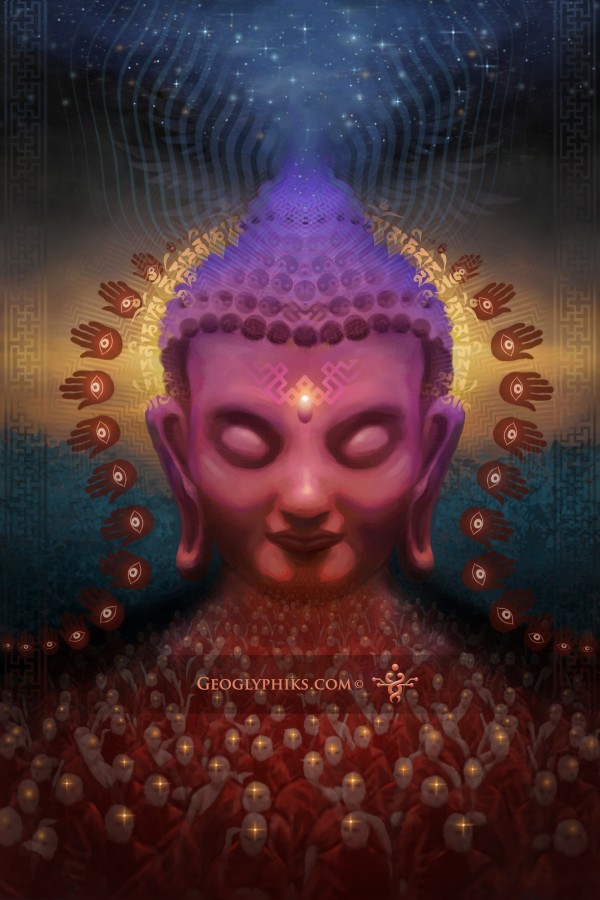
22 Sep AN INTRODUCTION TO YOGA NIDRA PRACTICE
Yoga Nidra- “A systematic method of inducing complete physical, mental, and emotional relaxation” Swami SatyanandaSaraswati
The Emotional Benefits of Yoga Nidra BY: Cynthia Herzog
Yoga Nidra comes from two Sanskrit words. Yoga – Union or focused awareness and Nidra – Sleep. Therefore Yoga Nidra means Yoga Sleep, a union of both wakeful awareness and sleeping states.
Yoga Nidra is a powerful practice of meditation and guided imagery. It is a practice of Pratyahara, the Sanskrit word for conscious withdrawal of the senses, where consciousness can be separated from external focus/senses and from sleep. It is dynamic sleep with full conscious awareness. The Yoga Nidra involves the powerful use of Sankalpa (Intention or Resolve). It also involves specific techniques to train the mind to practice rotating consciousness, to shift awareness, experience feeling/sensing opposites and to experience symbolism/imagery usually seen only in sleep. The use of symbolism and imagery, unique to Yoga Nidra, awakens and impacts the unconscious mind. The practice of Yoga Nidra generally lasts twenty to forty minutes,however it can be practiced in as little as ten to fifteen minutes.
Yoga Nidra is a specific set of breath, body, mindful and relaxation practices that induces alpha wave dominance in the brain. Alpha waves occur when one is closest to sleep yet not asleep. It is characterized by mental relaxation. In western psychology this state is called ‘hypnagogic’ and is a state most closely associated with increased receptivity and decreased reactivity. By training the mind with the Yoga Nidra practice, it is possible to access a brain state between asleep and fully alert, a state where one’s mind becomes open to all its potential. When complete relaxation is achieved, our receptivity is not influenced by our conscious mind and its perceived limitations; it becomes open to the limitless possibilities and potentials for healing the emotions, body, mind and spirit.
When we practice Yoga Nidra we are directed to follow the voice and instruction of the guide, to bring an ‘observer’s’ mind and turn our focus inward. With the practice of Yoga Nidra, we are not just relaxing (although it is a wonderful tool for this). We are systematically moving slowly to ever deeper realms of the mind, through conscious, subconscious and unconscious layers (in Yogic philosophy these are known and divided into the Five Koshas). When we move through the Koshas we can confront deeply rooted emotional tensions and/or beliefs. These beliefs are called Samskara (the Sanskrit word for mental grooves in the mind). Through the practice or Yoga Nidra repressed emotions can be released and beliefs restructured. From our earliest childhoods the events of our lives are registered both as a narrative story and as implicit memories, subconscious beliefs or Samskaras. As the events of our lives unfold, we develop deeply held beliefs/samskaras about ourselves and the world and how we get our real and perceived needs for safety, security and love met. These are implicit and are often beyond our conscious awareness, residing deep in the unconscious mind. Often they are negative/unrealistic and self-limiting beliefs that were at the time quite adaptive and useful and have become maladaptive and in many cases harmful. These samskaras do not die or go away. They play themselves out in our present moment and behaviors. Therefore, we are often ‘stuck’ in our present, recreating the same realities over and over with little understanding why or more importantly how to free ourselves.The unique, systematic practice of Yoga Nidra is designed to be powerful tool for healing at the level of body/mind and emotions.
The Essential Elements of the practice of Yoga Nidra:
- Become Comfortable
- Be entirely Calm and Still
- Be present – be fully Present and Awake
- Turn your Focus Inward
- Follow the Instructors Voice – the “Instruction, not the Instructor”
There are specific stages that one goes through during the practice of Yoga Nidra. They are:
- Preparation – lying in shavasana, getting comfortable in a quiet place with focus on removing or limiting external stimuli. the eyes remain closed during the entire practice.
- Relaxation – by stating a Mantra, by following the breath or a progressive relaxation with body scan
- Resolve – One picks an unique and meaningful, specific positive, present moment Intention
- Rotation of Consciousness – where one is instructed in a trip through the entire different parts of the body
- Breathing practice – counting breaths with focus on navel, chest, throat and nostril awareness
- Awareness of Sensations – an experience in opposite sensations of feeling, emotion and body
- Image Visualization – a rapid experience of things to experience at the level of awareness, emotion, imagination, and feeling
- Resolve – Repeating your Intention
- Finish – the Yoga Nidra practice is experienced in reverse, going from inward to outward experience, to ground ourselves back to this present moment.
The Emotional Benefits of Yoga Nidra
In our ‘modern’ world, psychologist, mental health professional and physicians are seeing a profound increase in anxiety, depression and stress related diseases. The rates of suicide for this generation are far beyond that of those seen even two decades ago. More disturbing still is the growing trend of depression and suicide in our youngest. The World Health Organization lists depression as the leading cause of disability worldwide. Women are far more prone to depression than men and men are more likely to act out their depression with suicide. Further it states that the average age for suicide is now 14-45. The National Institute of Mental Health states that about forty (40) million Americans will suffer from anxiety. In one study by the IMS Institute for Healthcare Informatics, the top ten selling prescription drugs listed are all lifestyle (and lifetime) drugs, with the number one prescription drug being pain medicine. Each of these issues: depression, anxiety and physical pain are either stressed caused or stressed exacerbated. The practice of Yoga Nidra is a proven, effective, simple and inexpensive tool for treating all of these conditions. A review of the benefits of Yoga Nidra are listed below:
Yoga Nidra is “a proven antidote to anxiety and restlessness” – Katherine Griffin
Yoga Nidra is a powerful meditation and relaxation tool.
Yoga Nidra trains the brain to deeply relax the body and release emotional, mental and physical tensions.
Yoga Nidra allows one to alter deeply held unconscious beliefs (samskaras) which help us change entrenched emotional responses and long standing limiting beliefs and behaviors.
Yoga Nidra builds resilience and helps build internal resources for coping with life stress. Developing resilience and internal coping mechanisms contributes to positive self-esteem.
Yoga Nidra has been found to be a powerful tool to treat PTSD – Post Traumatic Stress Disorder.
Yoga Nidra can be an effective pain management tool and further an effective treatment for addictions – especially when used in conjunction with other therapies.
Yoga Nidra can be used to ‘visualize’ new habits and positive healthy behaviors.
Yoga Nidra enhances memory and learning capacity. Both hemispheres of the mind are open in Yoga Nidra, therefore information can be planted directly to the subconscious mind.
Yoga Nidra is a bridge between the conscious and unconscious mind and can therefore be a powerful way to increase creativity.
Yoga Nidra allows one to become emotionally responsive and less reactive.
Yoga Nidra can engender a profound sense of Joy and Well-Being.
One caveat: If a person is suffering from profound depression, suicidal thinking/urges or other serious mental health problems, it is best to consult a physician and follow a treatment plan that improves the condition. Once treated, Yoga Nidra may be a powerful adjunct to that treatment.
Above article written by: Cynthia Herzog
EXPLORE OTHER TEACHINGS ON HER WEBSITE
An Introduction to Yoga Nidra Practice
BY: Richard Miller & Katherine Griffin
1. Connect to Your Heartfelt Desire. Bring to mind your heart’s deepest desire—something that you want more than anything else in life. Perhaps it is a desire for health, well-being, or awakening. Feel this heartfelt desire with your entire body while imagining and experiencing it in this moment as if it were true.
2. Set an Intention. Reflect on your intention for your practice today. It might be to relax and rest, or to inquire into a particular sensation, emotion, or belief. Whatever your intention, welcome and affirm it with your entire body and mind.
3. Find Your Inner Resource. Bring attention to your Inner Resource, a safe haven within your body where you experience feelings of security, well-being, and calm. You may imagine a place, person, or experience that helps you feel secure and at ease and that helps you feel within your body the sense of well-being. Re-experience your Inner Resource at any time during your practice or in daily life when you feel overwhelmed by an emotion, thought, or life circumstance and wish to feel secure and at ease.
4. Scan Your Body. Gradually move your awareness through your body. Sense your jaw, mouth, ears, nose, and eyes. Sense your forehead, scalp, neck, and the inside of your throat. Scan your attention through your left arm and left palm, your right arm and right palm, and then both arms and hands simultaneously. Sense your torso, pelvis, and sacrum. Experience sensation in your left hip, leg, and foot, and then in your right hip, leg, and foot. Sense your entire body as a field of radiant sensation.
5. Become Aware of Your Breath. Sense the body breathing by itself. Observe the natural flow of air in the nostrils, throat, and rib cage as well as the rise and fall of the abdomen with each breath. Feel each breath as flowing energy coursing throughout your entire body.
6. Welcome Your Feelings. Without judging or trying to change anything, welcome the sensations (such as heaviness, tension, or warmth) and emotions (such as sadness, anger, or worry) that are present in your body and mind. Also notice opposite sensations and emotions: If you feel worry, call up feelings of serenity; if you feel tense, experience ease. Sense each feeling and its opposite within your body.
7. Witness Your Thoughts. Notice and welcome the thoughts, memories, and images that are present in your mind. Observe your thoughts without judging them or trying to change them. As you come upon beliefs that you hold about yourself, also bring to mind and experience their opposites, welcoming your experience just as it is.
8. Experience Joy. Welcome sensations of joy, well-being, or bliss emanating from your heart or belly and spreading throughout your body and into the space around you. With every exhalation, experience sensations of warmth, joy, and well-being radiating throughout your body.
9. Observe Your Self. Be aware of your sense of “I-ness,” or personality. Notice this sense of identity when you say “I’m hungry,” “I’m angry,” or “I’m happy.” Then, experience yourself as an observing witness or Awareness that is cognizant of these feelings. Set aside thinking and dissolve into Awareness, awake and conscious of the self.
10. Reflect on Your Practice. As you complete your practice, reflect on the journey you’ve just taken. Affirm how the feeling of pure Being, or pure Awareness, is always present as a deep, unchanging peace that underlies every changing circumstance. Imagine integrating that feeling into your everyday life, in both pleasant and difficult moments, and always reconnecting to that sense of equanimity.
To Finish: At your own pace, transition back to your waking life, reorienting to your surroundings. Come back slowly, and pause for a moment to feel grateful for taking this time for yourself.
Discover Your Connection to All Living Things
If you’ve ever tried to sit in meditation for 30 minutes, you know that you don’t need to be recovering from trauma to be uncomfortable in your own mind. As a meditation technique, yoga nidra offers a gentle approach, starting with body awareness, then working compassionately with thoughts and emotions as they arise, and gradually leading the meditator to access a greater field of awareness. In fact, in some of the oldest written references to the term yoga nidra, it is synonymous with samadhi, or union, the ultimate goal of the eightfold path.This aspect of yoga nidra is perhaps the most difficult to put into words, but, for Miller, it’s the core of the practice. Learning to observe and welcome all of the sensations, emotions, and thoughts that arise in deep rest can lead a person to become less identified with the individual self—what Miller calls the “I-thought.” Through this experience, he says, it’s possible to lose the sense that one is separate from others and to tap into an unshakable sense of interconnectedness to all of life.And when that happens, Miller says, “There’s a deep pool of well-being. It’s what I discovered in that first yoga nidra session in 1970. That’s what I try to share.”
EXPLORE YOUR BODY & MORE YOGA PRACTICES ON MY
YOUTUBE CHANNEL PLAYLIST
“ACTIVATE YOUR BODY WITH BREATH & MOVEMENT!”







No Comments